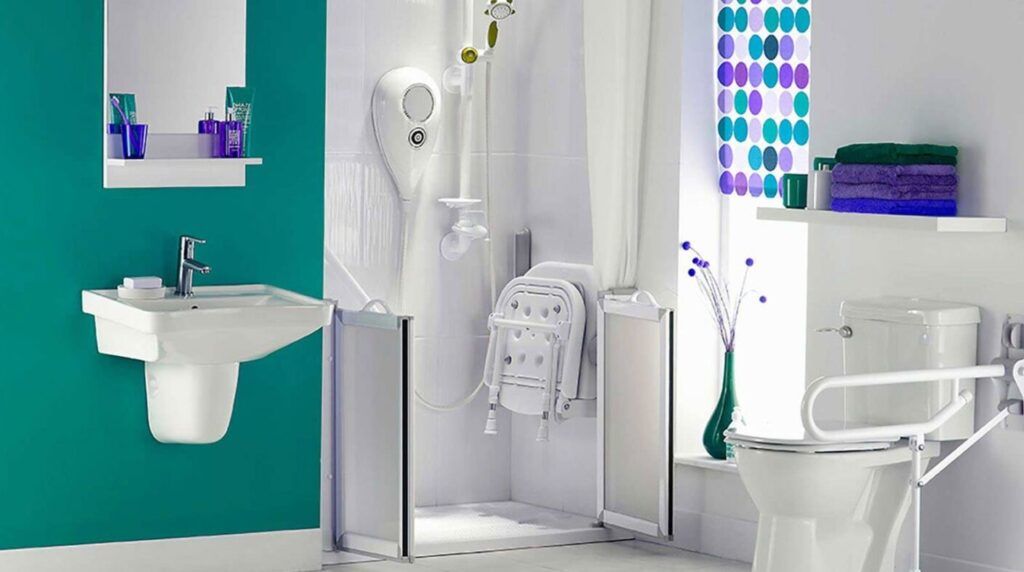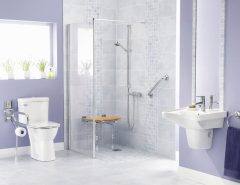The bathroom, a sanctuary for relaxation and rejuvenation, should be accessible and comfortable for everyone. But for individuals with limited mobility or dexterity, navigating a traditional bathroom can present challenges. Fortunately, advancements in smart technology are revolutionizing bath and shower accessibility, fostering independence, and creating a safer, more user-friendly environment.
This article explores how smart technology empowers people of all abilities to experience a more fulfilling bathing routine. We’ll delve into specific features, their benefits, and valuable considerations for incorporating them into your bathroom.
Touchless Technology: Convenience and Hygiene
One of the most significant contributions of smart technology is the introduction of touchless controls. Motion-sensor faucets eliminate the need to grasp handles, promoting hygiene and simplifying usage for those with limited hand and wrist mobility. Similarly, touchless toilets with automatic flushing offer enhanced hygiene and independence, especially for individuals who may struggle with manual flushing mechanisms.
Voice-Activated Controls: Freedom at Your Fingertips (or Voice!)
Imagine controlling the shower temperature, lighting, or even the vent fan with just your voice. Voice-activated controls empower users to manage various bathroom functions hands-free. This is a game-changer for individuals with limited upper-body mobility or those who may find reaching for controls difficult.
Smart Showers: A Personalized Bathing Experience
Smart shower systems elevate the bathing experience to a whole new level. These systems allow users to pre-set their preferred water temperature, eliminating the discomfort of sudden temperature changes. Additionally, some models offer rainfall or pulsating showerhead options, catering to individual preferences and promoting relaxation.
Smart Toilets: Beyond Convenience
Smart toilets go beyond just automatic flushing. Some models come equipped with heated seats, providing additional comfort, particularly for those with chronic pain or circulation issues. Bidet functionalities further enhance hygiene and independence, especially for individuals who may find traditional cleaning methods challenging.
Illuminating the Way: Smart Lighting for Safety and Ambiance
Smart lighting systems can be programmed to turn on automatically when motion is detected, eliminating the need to fumble for a light switch in a potentially slippery environment. This promotes safety and independence, especially at night or for those with visual impairments. Additionally, smart lighting allows for adjusting brightness and color temperature, creating a calming ambiance for a more spa-like experience.
Smart Safety Features: Peace of Mind in the Bathroom

Safety is paramount in the bathroom. Smart technology offers features like fall detection sensors that can trigger emergency alerts. Additionally, leak detectors can prevent water damage, a major concern for any bathroom.
Beyond Technology: Design Considerations
While smart technology offers tremendous advantages, creating a truly accessible bathroom requires a holistic approach. Here are some additional design considerations:
- Grab Bars: Strategically placed grab bars near the shower, toilet, and bathtub provide crucial support for those with balance issues.
- Shower Seats: Built-in shower seats offer a safe and comfortable place to sit while bathing.
- Shower Curbless Design: Eliminating a curb at the shower entrance creates a seamless entry and exit, reducing the risk of falls.
- Non-Slip Flooring: Using slip-resistant flooring throughout the bathroom minimizes the risk of slipping.
- Wider Doorways: Wider doorways allow for easier maneuvering, especially for individuals who use wheelchairs or mobility aids.
Integrating Smart Technology: A Seamless Blend
When incorporating smart technology, consider compatibility and ease of use. Opt for systems that integrate seamlessly with existing fixtures or require minimal modifications. Additionally, ensure the technology is user-friendly, with clear instructions and voice commands that are easy to understand.
Cost Considerations and Financial Assistance
Smart technology can add value to your bathroom, but the initial investment can be a concern. However, several factors can offset the cost. Smart features often lead to water conservation, lowering utility bills. Additionally, some government programs and insurance companies offer financial assistance for accessibility modifications in the home.
The Future of Accessible Bathing: A Brighter, More Inclusive Bathroom Experience
Smart technology represents a significant leap forward in creating bathrooms that cater to the needs of everyone. As advancements continue, we can expect even more innovative solutions to emerge. Imagine voice-activated controls that can personalize bathing preferences, voice-guided assistance for those with visual impairments, or smart mirrors that monitor health vitals while providing real-time feedback. The future of accessible bathing is not just about functionality; it’s about fostering a sense of empowerment, dignity, and well-being for all.
Empowering Independence and a More Fulfilling Bath Experience
Smart technology has the power to transform the bathroom into a truly accessible and empowering space for everyone. By incorporating touchless controls, voice-activated features, and smart safety elements alongside thoughtful design considerations, we can create bathrooms that promote independence, dignity, and a more fulfilling bathing experience for individuals of all abilities. As technology continues to evolve, we can expect even more innovative solutions that further enhance accessibility and redefine the future of the bathroom.




